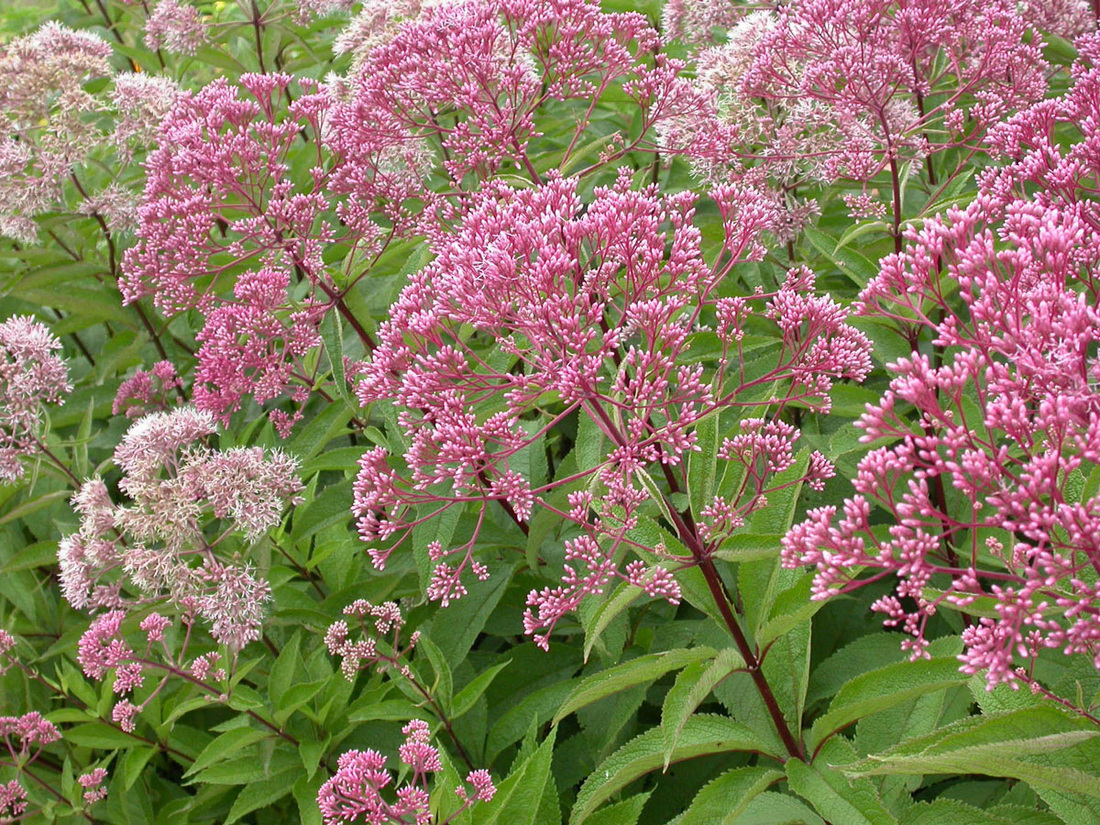|
Species of Joe Pye Weed of note in PA:
Purple Joe-Pye Weed E. purpureum A commonly cultivated variety. Grows in forests, meadows, fields, and woodland habitats. Coastal Joe-Pye Weed E. dubium Found in coastal plains and areas along major rivers and streams from South Carolina to Maine. Its leaf venation is deeply set, giving the leaf a more "quilted" look than other species in the genus. Hollow Joe-Pye E. fistulosum The common name is a bit misleading as most other Eutrochiums feature a hollow stem to some degree. E. fistulosum is the largest of the species, often growing well beyond 7ft with large flower plumes. Spotted Joe Pye E. maculatum Often featuring purple spots on its stems, E. maculatum has the largest geographical distribution and greatest variation in its morphology. It is commonly found in marshes, stream banks, and wetland margins. |
joe-pye weed
Botanical Name: Eutrochium purpureum
Plant Family: Aster (Asteraceae) Description: Joe-Pye Weed refers to many species of plants of the Eutrochium genus. E purpureum is a 4-6 ft. perennial with long, whorled, lance-shaped leaves topped by tiny pinkish-purple florets that can be 6-14 inches across. It can be difficult to distinguish one species of Joe-Pye from another, and species can hybridize with each other. The cultivar 'Little Joe' grows to about 2 ft in height, and is still commonly referenced by the botanical name Eupatorium dubium. Growing Conditions: Sun to part shade. Requires moist soils, do not let it dry out between waterings. Most common along bogs, marshes and stream banks. Bloom Time: July-September Bloom Color: Pink, purple Benefit to pollinators/wildlife: Attractive to a variety of bees, butterflies, and birds. Native Status: PA Native Location in habitat: Pollinator Demonstration Garden, PNPS Demo Garden, Native Bee Conservation Garden ('Little Joe' cultivar) |

